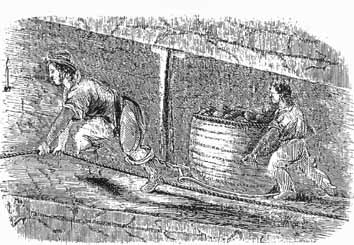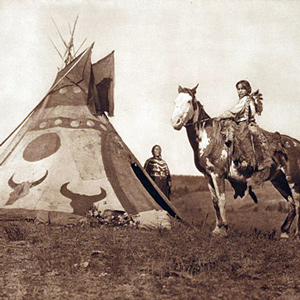Lewis and Clark returned with reports of sweeping grasslands, abundant beaver, large seams of coal, endless buffalo herds. In the years that followed, Euro-Americans settlement increased and Native American populations decreased in an era known as the Montana frontier. This series features articles by Rick Newby of Montanan pioneer stock.
Living on the Highline
by Rick Newby

Montana’s Upper Missouri landscape has seen enormous changes in the past two centuries and, at the same time, retained its remoteness, rugged character, and wild beauty.


On the Upper Missouri, the changes since the years Lewis and Clark traveled here have been less obvious perhaps, but no less remarkable.
Gold Mines on the Trail
by Joseph A. Mussulman

In 1862, a prospector named John White and his partners arrived at a creek previously named for Alexander Willard of the Corps of Discovery. White hit pay dirt on one of the sandbars in the creek. Plenty of other gold-hungry pilgrims were near enough to respond within weeks.
Always the Wind
by Joseph A. Mussulman

On 4 June 1805, while they were exploring the Maria’s River, Lewis and his men camped “among the willow bushes which defended us from the wind which blew hard from the N. W.” Homesteaders on the plains planted Shelterbelts to shield from strong wind and blowing snow.
Tiber Dam
by Joseph A. Mussulman

Tiber Dam was part of an extensive project starting in 1952 to mitigate flooding, generate electricity, irrigate the deserts of the Northern Plains, and ensure ample water to float commercial river traffic below Sioux City, Iowa.


Lewis and Clark reported seeing layers of coal along the Missouri River’s northern reach. Jefferson had only to look to Great Britain, already fifty years into the Industrial Revolution, to see what was coming.


Beginning with the Fort Laramie Treaty of 1851, the U.S. government set the vast area north of the Missouri (approximately 20 million acres) aside as the “Blackfeet Hunting Ground” for the Blackfeet and other tribes—Cree, Assiniboine, Gros Ventre, and Sioux.
The Yellowstone Valley Frontier
by Rick Newby

Much of the potential the captains saw in the Yellowstone country came to pass. For a few years, it yielded a seemingly endless supply of furs for eastern and European markets. Ultimately, the upper two-thirds of it proved a productive agricultural resource.
The Golden Triangle
Fur, oil, and wheat


Lewis’s two trips on the Marias River were in an area called by early Montana pioneers the golden triangle consisting of fur, oil, water, wheat, and dinosaur bones.
Experience the Lewis and Clark Trail
The Lewis and Clark Trail Experience—our sister site at lewisandclark.travel—connects the world to people and places on the Lewis and Clark Trail.
Discover More
- The Lewis and Clark Expedition: Day by Day by Gary E. Moulton (University of Nebraska Press, 2018). The story in prose, 14 May 1804–23 September 1806.
- The Lewis and Clark Journals: An American Epic of Discovery (abridged) by Gary E. Moulton (University of Nebraska Press, 2003). Selected journal excerpts, 14 May 1804–23 September 1806.
- The Lewis and Clark Journals. by Gary E. Moulton (University of Nebraska Press, 1983–2001). The complete story in 13 volumes.

